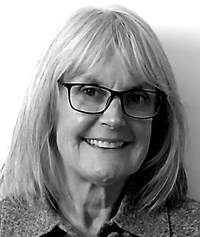
Journal Reviews
Balloons – more complicated than first thought?
This study describes the complications seen after balloon sinuplasty (BSP) - a commonly performed procedure (particularly in the USA where it is often performed as an office procedure) versus traditional functional endoscopic sinus surgery (FESS). The data source was a...
The relevance of rhinoplasty and septorhinoplasty from the commissioners
The rising costs of running the National Health Service and its overburdened resources has led to the constant monitoring of the low clinical value treatments. The operations of rhinoplasty and septorhinoplasty inevitably fall into this group and are subject to...
Does Tranexamic acid reduce intraoperative bleeding during FESS?
Intraoperative bleeding during FESS can reduce visibility and obscure important landmarks. This can result in longer operative times, increase risks of complications and even lead to incomplete surgery. Tranexamic acid is a drug which prevents fibrinolysis and stabilises blood clots....
Three-dimensional endoscopy for sinonasal procedures: is it really better?
In this interesting study the authors looked at the efficacy of two-dimensional (2D) versus 3D high-definition endoscopes in novice users, not those already trained in 2D. Ninety-two medical students used 2D and 3D endoscopes to complete two validated tasks and...
Sinonasal inverting papilloma: who is at risk of recurrence?
This study from a tertiary sinus surgery unit, describes some useful information in the follow-up of sinonasal inverted papilloma patients - in particular those likely to recur - and discusses the optimal staging systems to use to attempt to predict...
Predicting CSF leaks pre FESS: Gera classification - a new tool?
An interesting study from Italy looking at an anterior skull base classification that may be useful in predicting risk of intraoperative CSF leak during FESS surgery. Traditionally we have used the Keros classification system, developed in 1962 to categorise olfactory...
Chronic rhinosinusitis, are we treating the same disease?
Chronic rhinosinusitis (CRS) is a heterogenic disease. The effects of heterogeneity on treatment outcome are not very clear. Authors used clinical features such as endoscopic findings scores and full blood count findings in addition to analysis of 35 molecular markers....
Interleukins, cilia and polyps
Interleukins (ILs) including IL13 (Th2 cytokine) are inflammatory mediators and their role in asthma has been detailed before. This study explores IL13 receptor expression in chronic rhinosinusitis with nasal polyps (CRSwNP). The authors investigate protein and mRNA expression levels of...
Is a chest x-ray necessary in making urgent referrals for suspected head and neck cancer?
The article presents an audit on urgent referrals for suspected head and neck cancer in 2144 patients. Only 8.6% of cases proved positive for head and neck cancer. The Scottish Referral Guidelines were adhered only in 55.1% of cases. Interestingly,...
QOL studies for anterior skull base surgeries
The Anterior Skull Base Nasal Inventory-12 (ASK Nasal-12) is a standard tool for assessment of quality of life (QOL) in patients who have undergone endonasal transsphenoidal surgery. As nasal trauma and rhinological complications following endonasal transsphenoidal surgery can influence QOL,...
Anatomy revision
This article is well-received as an article that goes into appropriate length and depth regarding the embryology and subsequent growth of the paediatric nose (internal and external), nasopharynx and all of the individual sinuses. It has excellent line diagrams of...
Outcomes in rhinosinusitis
This review goes through the various different ways of assessing outcomes and describes the pros, cons and limitations of each. The different methods are described in the context of guidelines in diagnosis and management and compared with other conditions such...















